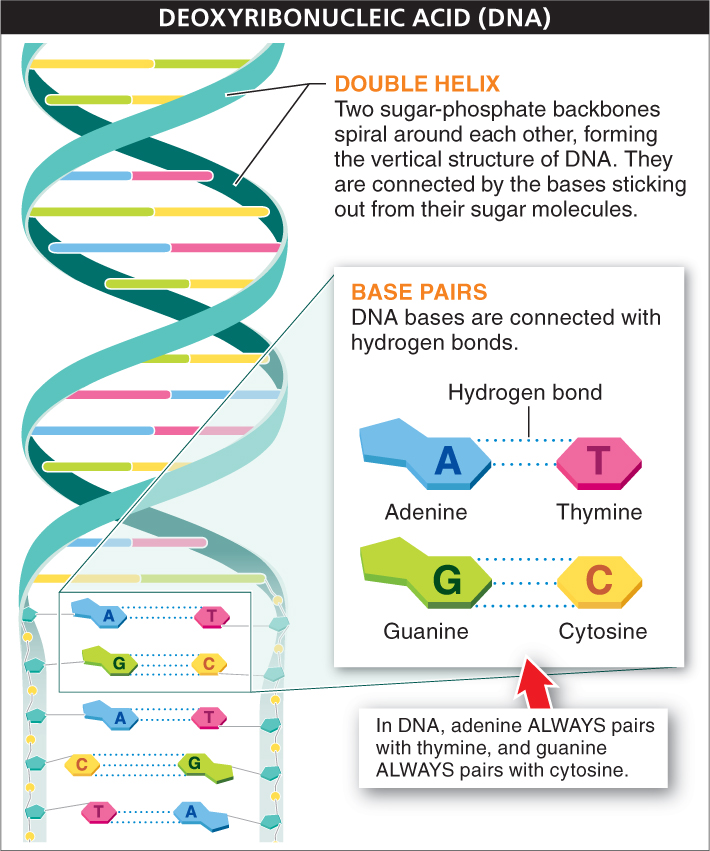A molecule of DNA has two strands, each a sugar-
You can picture a molecule of DNA as a ladder. The two sugar-

The two intertwining spirals fit together because only two combinations of bases pair up together. The base A always pairs with T, and C always pairs with G. Consequently, if the base sequence of one of the spirals is CCCCTTAGGAACC, the base sequence of the other must be GGGGAATCCTTGG. That is why researchers working on the Human Genome Project describe only one sequence of nucleotides when presenting a DNA sequence—
77
The sequences of nucleotide bases containing the information about how to produce a particular protein have anywhere from a hundred to several thousand bases. In a human, all of the DNA in a cell, containing all of the instructions for every protein that a human must produce, contains about three billion base pairs. Almost all of this DNA is in the cell’s nucleus.
TAKE-HOME MESSAGE 2.21
DNA is shaped like a ladder in which the long, vertical sides of the ladder are made from a sequence of sugar-
What pairs of bases interact with each other in a DNA molecule?
The base adenine (A) interacts with the base thymine (T), and the base guanine (G) interacts with the base cytosine (C).